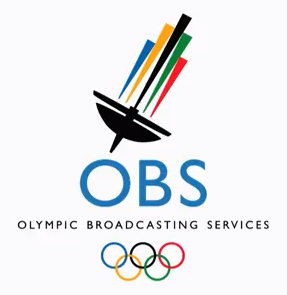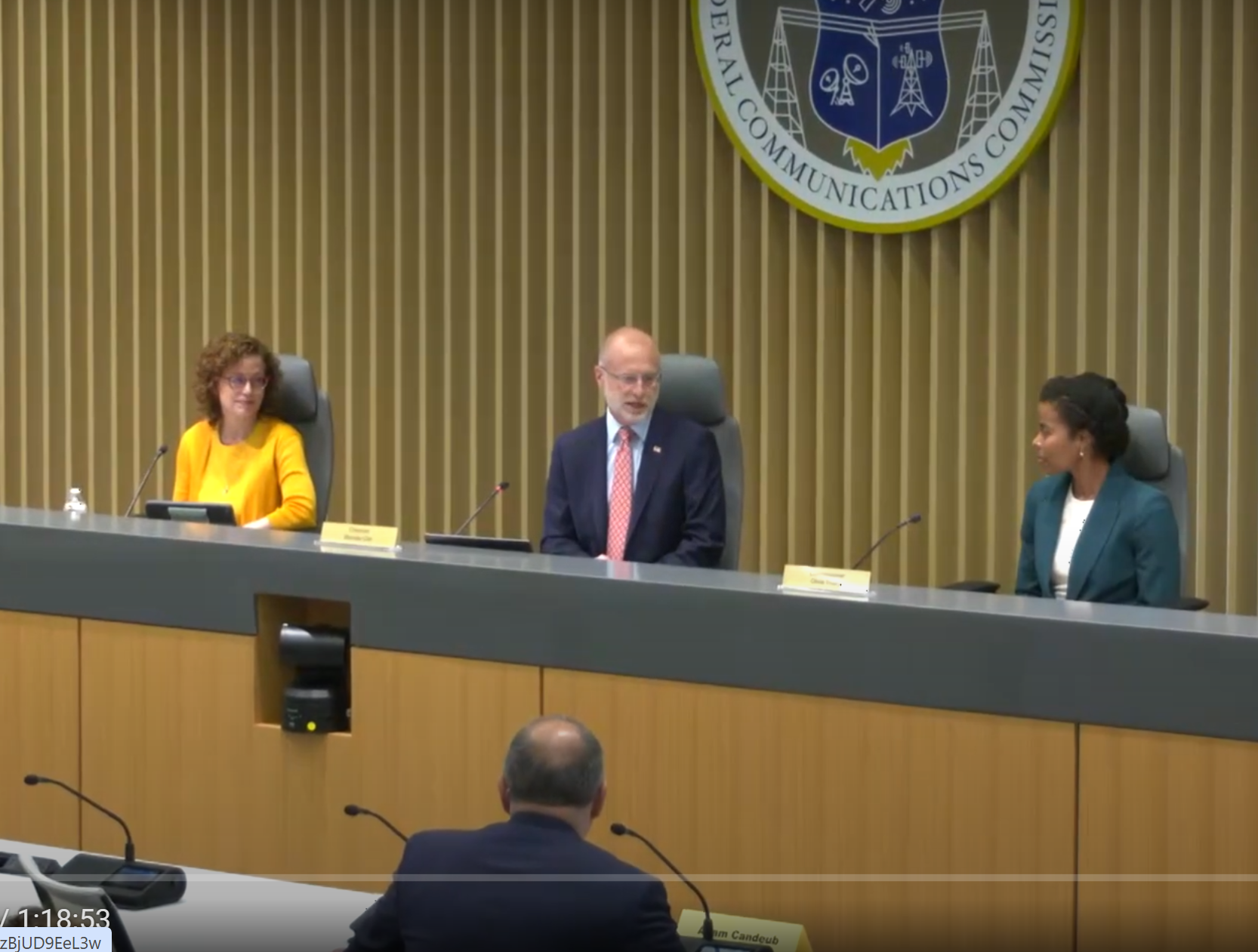Olympic Broadcasting: Inside the Chief Executive’s Office
MADRID—As the host broadcaster, Olympic Broadcasting Services (OBS) is responsible for providing the images and sound of the Olympic Games as a service to all organizations, including the rights holding broadcasters (RHBs), who have purchased the television and radio rights. OBS will also act as Host Broadcaster for the Rio 2016 Paralympic Games.
OBS produces and distributes unbiased live radio and television coverage of every sport from every venue and provides RHBs with the international signals, also known as the world feed.
In addition to developing a multilateral production plan for the International Signals, OBS provides additional services, equipment, facilities and supplies to the RHBs in order to help them produce their own unilateral production coverage.

Yiannis Exarchos
According to Yiannis Exarchos, CEO of OBS, broadcasting the events represents an innovative and exciting enterprise, with each Games providing its own set of production challenges. “This year, golf and rugby sevens have taken OBS into new territories. OBS has been working diligently to develop an efficient broadcast plan to deliver live action as it happens and engage audiences around the world—from the core fans to the newcomers—in the drama of the tournament.”
Exarchos says that OBS will rely on the expertise of NBC and Sky TV New Zealand to execute its production plan for golf and rugby sevens respectively.
OVERCOMING OBSTACLES
The professional video industry's #1 source for news, trends and product and tech information. Sign up below.
Alongside the challenges of developing the production for the two new sports, OBS has found it necessary to address a potentially difficult situation, which could have impacted production in the sport of sailing. This event will take place in Guanabara Bay, the most iconic inlet in Rio de Janeiro. Unfortunately, this is also located on the direct flight path to Santos Dumont airport. “Modern broadcast coverage of the Sailing events requires extensive use of aerial cameras. Rio 2016 managed to coordinate with the federal and regional governments and reschedule flights to and from Santos Dumont airport during the competition, thus allowing OBS’s helicopters and fixed wing aircraft to fly over the courses and properly cover the event during the Games.”
THE HUB
OBS is also responsible for designing, building, installing and operating the International Broadcast Centre (IBC). Located in a new, purpose-built structure in Barra Olympic Park, the IBC is close to nine Olympic competition venues and is adjacent to the Main Press Centre (MPC).

The 85,400sqm IBC houses the technical and administrative facilities for both OBS and the RHBs including edit suites, control rooms, studios and offices. More than 100 RHB organizations, including sub-licensees, will have a working space inside the IBC, while in excess of 12,000 personnel will be accredited to cover the Games. OBS itself will have 7,100 personnel on site.
“The IOC’s Olympic Agenda 2020 has reinforced the idea of a more sustainable Games plan,” says Exarchos. “OBS is continually striving to reduce the impact on the host city and country, while at the same time optimizing operations. For instance, by implementing reusable IBC construction modules, OBS has reduced waste by the equivalent of 2,800 trucks. So good news for the environment.”
NEW TECHNOLOGY
He goes on, “As part of its mission, OBS endeavours to make use of the latest state-of-the-art broadcasting technology and services to relay the most memorable celebration of sport to billions of viewers around the world. While tradition and precedent from previous Games is a guiding principle for the host broadcaster’s work, in its pursuit of excellence, OBS also recognizes the importance of emerging digital media and the evolving requirements of the RHBs.”
He cites two examples to prove his point; the Olympic Video Player (OVP) and the multi-channel distribution service (MDS).
“The OVP offers RHBs their own fully produced platform containing one of the best live video and on-demand players for the internet, tablets and mobiles, currently available. Launched for Sochi 2014, the OVP helped drive the record digital offerings for those Games. In Sochi, for the first time in Olympic history, the amount of digital coverage exceeded traditional television broadcasts with 60,000 hours available on digital platforms, compared with 42,000 hours on television. We expect the growth of digital will continue in Rio.”
Currently, 11 Rights Holding Broadcasters, representing more than 60 territories from around the globe will be subscribed to the OVP service for the Rio Games. As a result of the increased digital distribution and together with traditional television coverage, the Games in Rio will reach more global territories than ever before.
He continues, “The MDS has become one of the prime ways for the television coverage of the Olympic Games to be distributed to the world. In London, there were 13 subscribers distributing coverage from the MDS. For Sochi 2014, that number grew to 80 RHB companies from 70 different countries using the MDS to fully produce their entire coverage of the Games with little or no staff or facilities within the host city. There will be 52 takers in Rio, broadcasting the Games to 198 territories.”
Meanwhile, the OBS archive team will be responsible for ingesting in the Central Video Archive System all live venue feeds, multi clips feeds, and all output broadcast on the Olympic News Channel (ONC), as well as press conferences produced by OBS. All content will be video logged and tagged.
While this service will not be new, for the first time all mixed zones interviews from the ONC teams in the various venues will be ingested and made available to RHBs and distributed to a number of services. Another ‘first’ means the entire archive operation will be tapeless and completely file based. Dedicated lines and file acceleration services will be used to transfer content from Rio to the IOC Archive in Lausanne, Switzerland.
PLANNING PRODUCTION
OBS has secured 52 mobile units for the coverage of the Games, including four units from Brazilian suppliers and 48 units from others located in other countries. Additionally, 12 flyaway systems and seven independent audio production units have been secured. There will be another 31 support vans making a total fleet of 83 vehicles and 19 production kits.
The venue coverage will be transmitted to the IBC via the on-site Technical Operations Centre (TOC).
“OBS will utilize an extensive fibre optic contribution network that connects the venues and the IBC; a combination of dark fibre for venues in the metropolitan area of Rio and Synchronous Digital Hierarchy (SDH) for distant venues,” states Exarchos.
For the majority of installations OBS will be using standard RF communications at the venues, with diverse reception points cabled from the OB van. At specific venues such as golf, OBS will install an in-depth network that will support transmission and reception of all of the various RF sources including OBS RF cameras and the communications network.
RHBs receive ‘dirty’ feeds from OBS multilateral coverage. Specifically, the International Television Signal includes the live camera cut; all replays (including the Olympic Replay Transition to open and close the replay sequence), all start lists, athlete IDs, scorecards and results, result lists, crunch scoreboards without clocks, all timing graphics and all production enhancements including virtual graphics such as flags on the field of play, world record lines, best throw/jump lines, course maps and GPS positioning graphics.
TRAINING FOR THE FUTURE
Following its previous successes, OBS is continuing with its training program. “Forming an integral part of OBS’s legacy strategy, the Broadcast Training Program (BTP) aims to train the next generation of media and television professionals,” explains Exarchos. “In collaboration with selected universities in the host city, the training program gives students practical experience in how the largest broadcasting operation in the world will be assembled and function. Approximately 1,200 successful students have been offered paid roles during the Rio 2016 Games, such as audio assistant, camera assistant, commentary system operator and liaison officer and utility.”
UPPING THE QUALITY
Following a lead from London, OBS and NHK will be working together to produce some coverage in UHD. Beyond that, 8K will be used for the opening and closing ceremonies and some selected sports with the output being made available to interested RHBs. The 8K experience will also include an immersive 3D 22.2 multi-channel surround system.
“We will also be looking closely at another first in Olympic Broadcasting history,” declares Exarchos. “Viewers from around the world will be able to enjoy a truly unique viewing experience with high-definition virtual reality (VR). This follows a first successful test of a 180-degree VR experience at the Lillehammer 2016 Winter Youth Olympic Games.”
Using a compatible headset, viewers will be virtually transported to the heart of the Olympic action with VR coverage including the opening and closing ceremonies and one key event per day. Olympic content will be available live through VR technologies, but also as video on-demand. Highlights of 360-degree video content will also be available, without the need for VR headsets.
OBS is also exploring the possibility of a limited experimental production in WCG/HDR (wide colour gamut/high dynamic range).
Exarchos concludes, “As in every aspect of the Olympic Games, it is about excellence, but the Games in Rio provide us with two unique opportunities. First, on the digital front, to showcase to the world the first Games in South America, taking place in one of the most spectacular cities of the world; and second, to align the broadcast of these Games with the ongoing revolution in digital media.”
